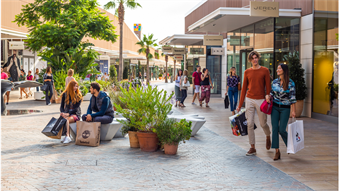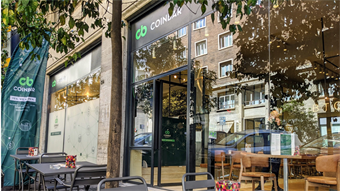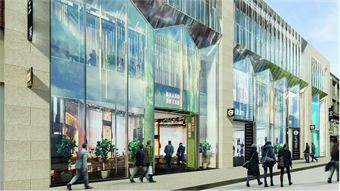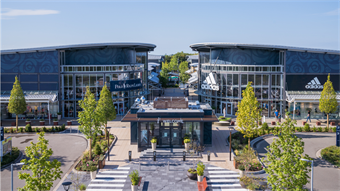Braving tech’s new era
- In Special report
- 13:02, 19 juli 2019
- 4592 Views
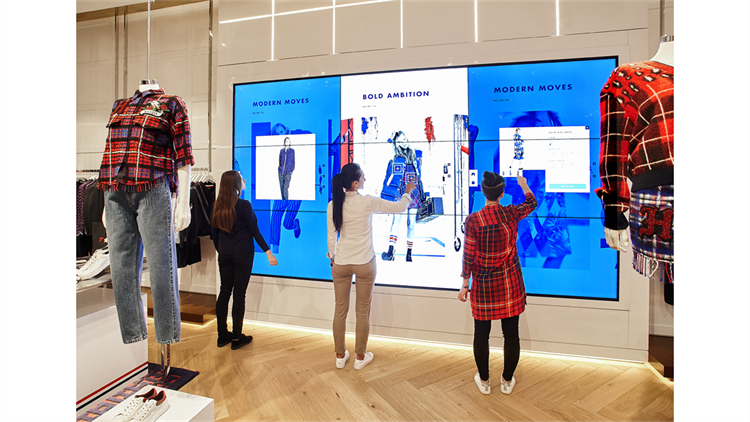
When Zara opened the doors to its revamped Westfield Stratford City London store last summer, high-tech offerings were at the heart of customer experience. The new two-storey shop doubled in size to almost 50,000 sq ft, bridging the gap between online and in-store shopping. There are automated order collection points, self-checkout and mobile payment systems – and sales assistants work the shop floor with hand-held digital devices.
The fashion retailer also launched its interactive mirror pilot in store – powered by radio-frequency identification or RFID technology – that detects the garment a customer is holding and shows what it will look like on a model in the mirror. Online orders are available in store on the same day if made before 2pm or the next day if made later in the day.
Pablo Isla, Chairman and CEO of Zara’s parent Inditex says that ‘we have invested in both the most advanced technology and optimised our stores for this aim. Our business model combines stores and digital seamlessly, and we are ready for the opportunities that this brings with current and new customers’.
Giving seamless service
Personalising in-store experience may not be a new concept for anyone who remembers shopping before the internet engulfed our screens, but it’s certainly high on retailers’ agendas. Online and offline retail are more than ever intrinsically linked, and retailers that embrace this dynamic are leveraging technology to give consumers a seamless retail experience.
Tech-driven customer-centric approaches are promoting the future of phygical retail – where the fusion of physical and digital are reshaping tomorrow’s retail innovation today.
A pan-European research study called I like shopping! published by L’Observatoire Cetelem in 2018 shows that consumers of all ages use technology to make informed purchases both online and in store. Nearly seven in ten (69%) millennials – and a slightly smaller number (64%) of consumers of all ages – look at products online before making their purchases in store. Of course, this has to be balanced with the showrooming effects many retailers have to contend with. And over half (56%) of millennials compare prices online while shopping in store, compared with 44% of all consumers in the 17-country research study.
Rise of the phygical offering
Time spent glued to smartphone and computer screens might be taking its toll for some consumers. Amazon Go’s much-expected cashier-less debut in London’s West End is part of a trend that integrates digital experiences into physical spaces to enhance customer experiences. The same is also true for many forward-looking bricks-and-mortar retailers that are looking to capture consumers’ imaginations – and their wallets – with in-store tech innovation.
Looking forward, the phygical movement looks set to grow further this year. ‘We’re predicting that digital and physical interfaces will become even more integrated to provide a seamless experience across online and offline channels,’ says Abbie Walsh, Managing Director, UK and Ireland at Fjord, part of Accenture Interactive. ‘This shift towards closer integration has been most evident in the retail space. In China, for example, HEMA Supermarket is a fusion between a traditional supermarket and fulfilment centre, with everything in this new retail store powered by an app.’
Meeting consumer demand
Also, research by Forrester and Accenture Interactive shows that 87% of organisations agree that customers want more than just traditional experiences. So, many retailers are using knowledge of their customers’ online experiences to reshape their physical experiences. The idea is that they ‘create a seamless customer experience which transcends the digital world,’ says Walsh.
Technology applications in retail span an ever-diverse range, covering customer insights, bespoke product promotion, inventory management, automation, factory robots, drone-based deliveries, virtual reality, to digitalised supply chains. Among the customer experience-enhancing applications that are featured on page xx, many are powered by artificial intelligence and machine learning.
Retailers want to encourage more end-to-end customer experiences rather than channel-specific experiences, but have they invested in the right technology infrastructure to deliver the desired results?
Coping with legacy tech
One of the big challenges for retail legacy players is their often-antiquated infrastructure. ‘The majority of retail organisations over the last 10 to 15 years have desperately been trying to catch up on their legacy debt, specifically around technology,’ Paul Martin, KPMG’s UK Head of Retail, tells Retail Watch.
‘The key point is that most organisations have focused on their frontend first. The business model of the past, which they obviously still operate, is to ensure that the store environment looks good and they try to do exactly the same online,’ says Martin. ‘They’ve shifted a proportion of their capex investment from their physical stores to their online stores to the detriment of a lot of their backend systems.’
With the unrelenting growth of e-commerce, retailers need to be that much more efficient with their stock, and a lot of retail technology addresses the backend. Backend means several things: the process, ways of working and the fundamentals around having good stock accuracy to enable frontend services.
‘There are various programmes that try to drive that backend efficiency. We’re doing an RFID deployment at fashion retailer Reiss to help them improve accuracy and to sweat the asset of their stock,’ says Martin Schofield, CEO of Retail247 Consulting. ‘RFID is an enabler of that process but needs to be deployed in context of process and environment. We’re spending most of our time on projects at the backend, covering areas such as new stock systems, order management and a drive to re-establish the basics of retail data. Products, stock and customers – how hard can it be?’
Tech strain is mounting
However, capex investment in retail technology has been under pressure at many retailers as they have attempted to juggle boosting both their frontend appeal and maintaining robust systems at the backend. And that strain is not going away.
‘Most established retailers have systems and solution sets that have become restrictive. They have made lots of good decisions over time and have ended up with spaghetti-like solution sets that are barely hanging together,’ says Schofield. ‘There is generally a realisation among retailers that their systems are sub-standard, the basic foundation needs to be improved and made more efficient so that they can build for an uncertain future.’
With the growth of onmichannel, fulfilment and product lifecycle management have become significantly more complex. ‘The necessity to have invested in your back office has only increased but most retailers have not done it,’ says KPMG’s Martin. ‘Excel is the most prevalent operating system at most retailers.’
While there is a dichotomy between frontend and backend investment, retailers have been investing in their backed systems, Martin explains, but the longer they have waited the greater their technology legacy debt is, and the more expensive and more risky it has become. ‘There have been so many backend implementation projects that have gone badly wrong, they have not hit the business case, they have taken significantly longer and have cost considerably more,’ he says.
High stakes – higher losses
One of the most high-profile retail digital transformation projects to be cancelled emerged last July when Lidl announced it had ended its reported €500 mln SAP introduction. The Lidl project was an ambitious digital transformation project and expectations were correspondingly high. But industry analysts believe that pace of technology change should have limited the retailer to a two-year transformation programme time horizon, not the seven years that it took.
Sweden’s H&M, the world’s second-largest clothes retailer, ran into problems in 2017 and 2018 with attempts to digitalise its supply chain through a new logistics system. Problems in the third-quarter of 2018 led to a charge of almost €40 mln in extraordinary costs in the quarter due to complications. As a result, sales in the US, France, Italy and Belgium were negatively impacted.
However, the difficulties for traditional business in the realm of digital transformation tend not to be shared by newer companies that are unburdened by legacy systems and dated processes.
Omnichannel from a retailer’s perspective enables demand to be fulfilled from any point in disparate stock pool and tries to avoid stock being isolated and moved around unnecessarily. ‘Any retailer wants to sell as much of their product as possible at full, or close to full price,’ says Schofield. ‘Any product slipping into the cycle of deep markdown ultimately becomes about the management of loss-making disposal. More – and ever-earlier – sale periods make this even more important.’
To help facilitate digital transformation in retail, much more investment is needed. Global research and advisory firm Gartner forecasts that capex investment in retail IT in Western Europe is growing steadily at between 2.6% and 3.0% a year between 2019 and 2022. The chart (opposite) shows that retail technology investment in Western Europe will top US$177 bn during the 2019-2022 period. For many retailers the level of investment required will force a change of approach.
Decoupling of backend and frontend
Linked to the rise of the retail platform business model (see US and Chinese platforms are poised to reshape retail in Europe on page xx) retail economics are becoming increasingly more challenging, and to be profitable as a traditional legacy retailer is equally more and more difficult.
‘If we could do everything from a clean sheet of paper, we’d design something simple and efficient,’ says Schofield. ‘It’s probably more important to be functionally competent than it is to be experiential sometimes. Data inaccuracy leading to breaking a retail promise is more likely to deter a customer in the long term than not having the latest bells and whistles.’
Silver-lined cloud tech
New technologies such as artificial intelligence, robotic process automation, conversational interfaces and blockchain are disrupting the application landscape and are likely to guarantee a competitive advantage to early adopters. For those retailers that are unable to fund such innovation directly, software-as-as-service and platform-as-a-service solutions wrapped up as retail-as-a-service solutions could be the way forward.
The inevitable rise of US and Chinese giant commerce platforms means that European retailers will face a very different technology ecosystem over the next few years. That said, cloud-based backend systems may offer retailers that welcome clean slate to implement faster, cost-effective lower-risk systems.
The amount of transformation needed in the backend to be a retailer of the future is likely going to cost significant amounts, and for a number of retailers they won’t be able to afford to make that investment. ‘They may just have to outsource the backend systems technology and to ask a platform provider as a service to run it for them,’ says KPMG’s Martin. ‘Collaboration is key in this context and retailers will have to improve their game for the future.’
Harnessing tech for efficient stock and inventory
For many retailers, stock and inventory management is the single largest cost, often higher than rent or staff costs. Retailers in the omnichannel age feel these pressures, knowing how best to stock for projected online and physical store sales. Technology is helping to create welcome solutions.
According to a new report from IBM, 85% of retail companies surveyed plan to use intelligent automation for supply chain planning by 2021.
Retailers like Inditex are paving the way by collecting consumer data, sometimes this is consent-based, and other times it is an unconscious consumer decision. ‘Store data is a combination of: managers on the ground watching what sells and responding to that directly – and information retailers capture through online sales and behaviour,’ says Hines’ Director of Shopping Centre Asset Management Sarah Bloodworth.
This data can be harnessed using artificial intelligence and machine learning in many ways. They include real-time analysis of popular and less popular products, which can inform inventory management. Data can also be used for predictive analytics – highlighting what other products existing customers might like, further driving sales efficiencies and revenues.
‘One of our retailers in the UK has started to order product based on store-level data and the retailer’s understanding of their specific customers,’ says Bloodworth. ‘The retailer has brought the decision-making on inventory buying to a much more local level and that has in turn fed straight through to its turnover performance.’
Some retailers are customising inventory and products of particular stores to local-market preferences. Adidas’ new manufacturing Speedfactories – such as its Ansbach facility in Germany – leverage 3D printing, robotic arms, and computerised knitting to produce new shoes and apparel. The Speedfactories bring most of the custom-made production process under one roof, cutting down manufacturing time from several months to just days.
Also, last-mile delivery operations – ensuring customer deliveries within 24 hours through integrated digitalised supply chains – are equally applicable for inventory management for high street or shopping centre retailers.
‘Whenever retailers run short of popular items they can have new stock within 24 hours. They do not need to spend x amount of euros per sq m on an inventory stock room in a prime high street locations or shopping centre,’ explains Marco Riva, Senior Vice President at retail-led European investment manager Meyer Bergman.
In-store tech boosts customer choice
In the phygical retail world, technology offers a real-time blend of choice and personalisation, allowing consumers to make informed choices in store, while meeting their specific needs and also reinforcing their loyalty and emotional engagement with trusted retailers.
Spoon Guru teams up with Tesco
As well as its relationship with Tesco, UK-headquartered Spoon Guru has retailer partnerships in the Netherlands, Australia and the US. Spoon Guru’s platform combines artificial intelligence, machine learning and nutritional expertise to support a wide array of well-being, lifestyle and medical diets. It accurately matches foods and recipes to people’s unique dietary needs. Retailers don’t license Spoon Guru’s app, instead they license its data-processing capabilities.
Nielsen published a study last year that showed that 64% of the world’s population has an exclusion diet. ‘If retailers get if wrong for an edge case, someone could end up in hospital or worse,’ says Markus Stripf, Co-founder and CEO of Spoon Guru.
‘We give retailers the ability to provide customised shopping experiences for their customers based on whatever dietary experience their customers may have,’ says Stripf. ‘We support dietary attributes and super-charge meta-data to help our retail clients make sense of their product catalogue. The solution focuses on dietary preferences, whether it’s a lifestyle preference or a dietary requirement like an allergy or an intolerance. It’s a set of a couple of hundred attributes. We give an accuracy guarantee that nobody else is able to offer.’
Technology is driving the future of phygical retail – where physical and digital are reshaping retail innovation in store. But the sheer scale of capital expenditure investment needed means that retailers have to be tech-smart with the choices they prioritise.
As well as offering transparency for consumers shopping for special ingredients or products, Spoon Guru helps retailers de-risk the effects of potentially harmful food items. We take the risk away from our retail partners of a consumer suffering from an undisclosed ingredient in a food product. And we allow our partners to offer their customers highly personalised shopping experiences. It’s all driven by the huge consumer demand. That’s why we decided to use our technological know-how to solve that problem.’
Beyond food retail, Spoon Guru has the potential to be scalable as a personalisation platform, says Stripf. ‘There’s a big demand for the provenance of the product whether that’s purchasing local products or understanding the whole supply chain of a product.’
Specsavers focuses on Frame Styler tech
All UK and Republic of Ireland Specsavers stores have access to the Frame Styler app that uses imaging software to enable customers to compare what they look like in different glasses. It’s free to use and makes up part of the standard eye-test process.
If trials are successful, the company could roll out the in-store technology to its network of nearly 2,000 stores across Europe, Australia and New Zealand.
Shop assistants help customers use the app to scan their face to create a 3D model and generate recommendations, taking the fuss out of trying to pick which glasses work best for their face shape.
The glasses are superimposed onto the image of face, which is particularly useful if customers are short-sighted and don’t wear contact lenses, as they no longer have to rely on seeing themselves closely in a mirror.
Delivering real-time digital offers
Berlin-based technology company SO1 has pioneered its artificial intelligence-powered shopping marketing tool, bringing online marketing techniques to the in-store shopping experience. Working with retailers in Germany such as Budni, Edeka and Netto, SO1’s technology delivers individualised offers via a store’s smartphone app, shopping website and point of sales till prints.
SO1’s CEO Raimund Bau says the most successful retailers are ‘creating a meaningful relationship with their customers and are driving smart promotion schemes, which are lifting their top line without endangering their bottom line’.
The company claims to understand consumer preferences, even for categories or products that customers have never been observed purchasing. SO1 also claims to offer what consumers ‘truly prefer’ as well as helping retailers to increase basket size and additional customer visits ‘at efficient discounts’.


